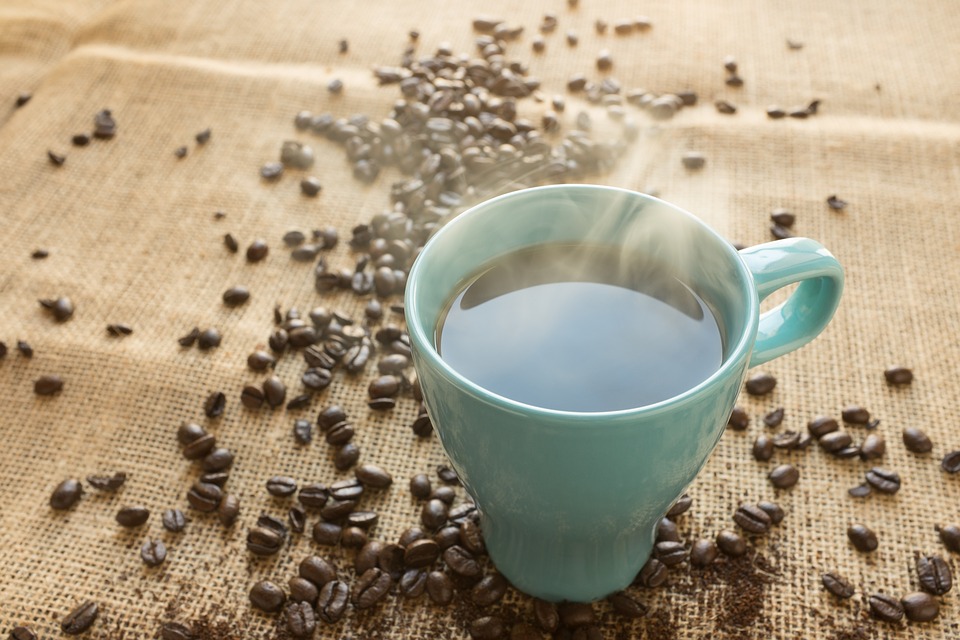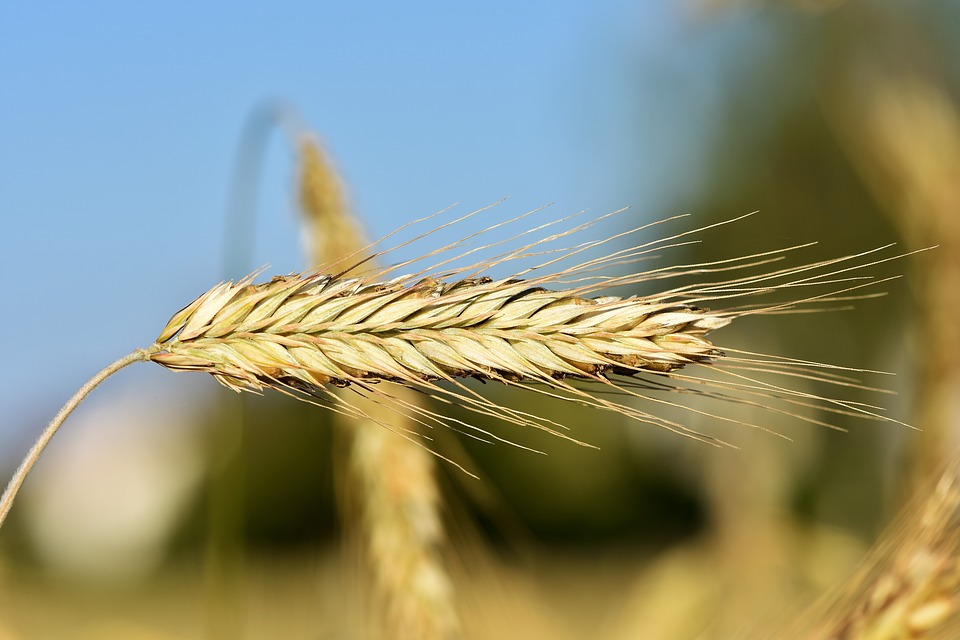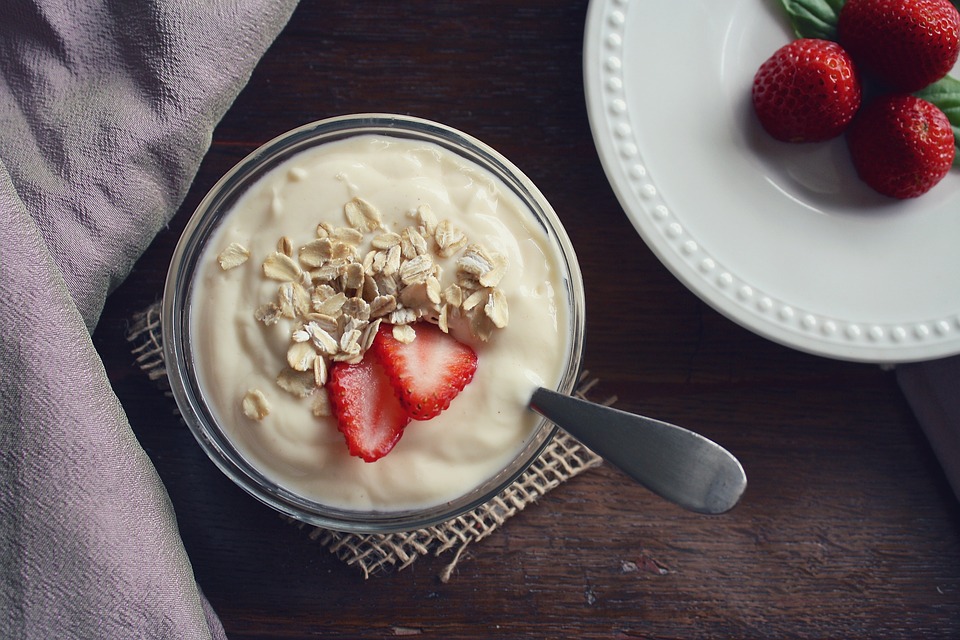
What do Extraordinary People Eat for Breakfast?
In 1993, approximately one in seven UK adults was clinically obese.
Today, it’s one in four.
Obesity is the country’s leading cause of type 2 diabetes and puts you at risk for stroke and heart disease too.
The way we work doesn’t help. A male middle-aged office worker in the UK sits around for more hours in the day than a retired seventy-five-year-old. As automation starts to come into our lives further, this deskbound lifestyle will only become more common.
We can’t all head off to become a surfing instructor in Bali (though wouldn’t that be nice?). But in saying that, we can learn from the careers where food and exercise are key parts of the routine; where what you eat is as important as what you do. We’ve explored the inspiring, the wacky and the truly extraordinary to bring you food ideas you can start putting into your fridge freezer this evening.
Did you know? In the UK, only 1 in 4 adults and 1 in 6 children eat five or more portions of fruit and veg a day.
Look out for Fiona Hunter’s expert insights further in. Fiona has seventeen years’ food experience as a writer, consultant, and broadcaster and previously worked for the NHS as well.
Marathon runners
Eat clean, eat right
For a long time, runners have been told to load up on carbs before a race, increasing glycogen stores that can be accessed by the body when energy levels begin to flag.
In recent times, however, that notion is being contested. The body can store more fat than it can glycogen, and advocates of a low-carb high-fat diet are making themselves heard. Cue Professor Tim Noakes, a former carb-loading fanatic who changed his tune after discovering he had developed type 2 diabetes, despite a rigorous exercise routine.
Carbs aren’t out completely, Noakes and his supporters concede, but at a certain point, our body simply fails to metabolize them properly.
“There is a neurological phenomenon to getting carbohydrate in the short term. It motivates you and makes you feel good,” Noakes says. “But if you eat too much, you can’t store it in your muscles while exercising and so you end up producing all this insulin to burn the excess later in the day when you’re resting and you don’t need it anymore.”
Noakes says that some athletes are simply better adapted to eating carbs. But, for a great many of us, we’re insulin resistant, meaning we don’t process the sugar in bread, pasta, and rice properly, turning it into fat instead. Noakes contends that 300g a day should be the upper limit on carbohydrate intake.
While the debate rages on, there’s evidence it works – for some. The 2014 Boston Marathon winner Meb Keflezighi has found a second wind in his career in his thirties after deciding to be more careful with his diet. “Keflezighi is strategic,” Competitor Running notes. “Having reduced his carbohydrate percentage over the years, he’s replaced it with more protein and a bit more healthy fat.” The carbs he ingests he times to be an immediately accessible source of energy.
Tip: Eat the same thing before every race. In Meb Keflezighi’s case, it’s spaghetti with meatballs. Your body responds well to foods it understands, so if you’re taking up distance running, don’t give it a shock the night before a big event.
Ultimately no one can run those miles for you and what you eat is a personal choice that should be based on how your body feels as the miles rack up. Still, it’s worth knowing an elite runner’s approach to food. Meb has this to say: “My thinking is,” ‘Eat because I need it, not because I want it.’ We always have too much access. It’s a fine line. I tell my wife it’s fine if the kids have cookies, but I don’t want to see it, because if I see it, I’m going to grab it.”
That goes for alcohol too. Meb has spent much of his adult life teetotal – allowing himself a glass of wine now and then. It’s not that he doesn’t enjoy a drink, but to sustain his powers of willpower he simply can’t take the risk. Even in retirement, Meb concedes he’ll stick to his ways because, in the end, running is total – running is life.
What Meb eats on a hard training day
- Breakfast: Wheat toast with almond butter
- Lunch: Scrambled eggs with fresh meats and vegetables; avocados are especially good
- Post-run: Peanut butter protein bar
- Dinner: Whole-wheat spaghetti, meatballs and tomato sauce
- Snacks: Five servings of fruit throughout the day, including bananas, oranges, blueberries
- Alcohol? Not during active training.
Based on Meb’s diet as told to USA Today.
Ask Fiona: what are the advantages of cutting out alcohol?
“Two large glasses of wine (175ml) contain around 178 calories, which is about the same as two chocolate digestive biscuits.
But it’s not just about calories – it’s a well-known fact that willpower dissolves with alcohol and studies show that after a few drinks you are much more susceptible to overeating and making poor food choices. Added to that, regularly drinking more than 14 units of alcohol a week can cause liver damage and increase the risk of certain types of cancer and heart disease.”
Food critics
Temptation is everywhere you look
A day job where you sit down to a dish of carefully-prepared food, knife, and fork at the ready, serviette tucked into the neck of your shirt? Being a food critic can hardly be the toughest job in the world, can it?
But like all careers, it has its hazards, and temptation is the biggest of all.
The problem with eating out is that you have no control over what’s put into the meal in front of you. You’re in an environment where the yardstick, the barometer of quality, is taste and mouthfeel. More insidiously, highly moreish foods are often designed to produce an intense taste-hit at the front of the mouth that dies off at the end, keeping us locked into the cycle of replenishing that initial hit.
And butter, oil, salt, and sugar are the four horsemen, the four weapons, the enemies of our waistline. The late Anthony Bourdain said of butter: “It’s the first thing and the last thing in every pan. That’s why restaurant food tastes better than home food a lot of the time.”[8] That’s not to mention the salt, added before it leaves the kitchen, and inevitably before you start to eat.
If only we could eat with a free license because food is the quickest route to our hearts. And the quickest route to heart failure. Scientists say obesity is a sure-fire predictor of heart failure later in life.
It’s easier than you think to cook at home and it gives you complete control over the amount of oil, butter, salt and sugar you use. Don’t say no to restaurants completely, but like anything in life, consider a balance. Your heart will thank you.
How could a day of fine dining look?
- Breakfast: Free range eggs, savory bacon, pork sausages, fried bread, tomatoes, mushrooms and black pudding
- Lunch: Roast chateaubriand of beef; Yorkshire pudding, roast vegetables, red wine jus
- Midday dessert: Vanilla crème brûlée with shortbread
- Dinner: 3-courses consisting of:
- Veal starter
- Wagyu beef fillet with garlic and parsley snails
- Chocolate parfait with mint foam
- Alcohol? Food and alcohol are a classic pairing – so yes.
Based on a fine dining menu in Central London
Ask Fiona: What are tips for eating out at restaurants?
“It can be more difficult to eat healthily and manage your weight if you eat out a lot because it’s difficult to know how many calories, salt, fat and sugar dishes contain.
The good news? It’s not impossible! Portion sizes are often much larger in restaurants, so why not opt for two starters? Don’t be afraid to ask staff how dishes are prepared and ask for things like sauces or dressings to be served separately so you can control how much you eat.”
Astronauts
Shrimp cocktail is a favorite, surprisingly
Propelled hundreds of miles above Earth into the inky blackness of space for weeks, months or even years at a time, isolation and loneliness are very real realities for astronauts. Ironically, in this extreme and inhospitable environment, the biggest problem is often boredom.
An entire industry is racing to make space grub exciting. The problem is that you’ve got to make it last. The answer is to cook the food on the big blue planet we call home, freeze it and then dehydrate it in a vacuum chamber. The water is taken out of the produce, and the produce is placed in a space-ready package.
Did you know? Before a mission, astronauts sit down to try the food, rating the dishes on a 1-9 scale. The most popular food of all is shrimp cocktail. Scientists think this is because our taste buds take a hit in space (astronauts often complain of feeling “clogged up”) and the spicy shrimp cocktail sauce hits the palate with a real zing.[10]
You’re probably picturing a group of boffins up above us huddled together for warmth, waiting for their next meal to arrive, rationing food like survivors in a Ridley Scott sci-fi. Actually, food is in plentiful supply and astronauts eat like it’s going out of style – an enormous 3,000 calories and counting a day.
Why are their diets so calorific? Because they exercise in the morning and in the evening and need to eat regularly as a result. The treadmill and bike are in regular use (the former a miracle of engineering with special traps keeping our spacefarers in place)[11] and by working up a sweat, astronauts keep their bodies from wasting away.
On Earth, we’re pushing against gravity, exercising all the time without realizing it. Even our hearts get a workout, forcing blood to our brain, and keeping it from pooling at our feet.
That’s when we actually walk around and do stuff, mind. As sedentary lifestyles become the norm we’re simulating what life is like in space without realizing it. Feet up on the couch? In bed for two days? Your body is in a “zero gravity” state, muscles and bones slowly decaying, and NASA actually pays people to lie in bed for months on end to see what results.[12]
What’s might you be served on the International Space Station?
- Breakfast: Coffee, shelf-life enhanced waffles, dehydrated eggs, oatmeal, coffee
- Second breakfast: A snack consisting of cheese, biscuits, and juice
- Lunch: Soup, stewed beef, juice, fruit, bread
- Supper: Hamburger, eggs, cottage cheese, nuts, bread, sweets, and tea
- Alcohol? Once upon a time, astronauts did drink in space, but the International Space Station is now a drink-free zone.
Based on NASA’s literature on space food
Ask Fiona: We hear it all the time, but what does exercise actually give us?
“Exercise provides myriad benefits. Regular exercise can guard against heart disease and stroke, lower your risk for type 2 diabetes and even reduce the likelihood of developing certain kinds of cancers. In addition, it can combat depression and dementia. Adults should aim for at least 150 minutes of moderate aerobic activity per week, such as walking, or 75 minutes of vigorous aerobic activity, like running.”
Sherpa Everest guides
A breakfast of champions
Sherpas live in Solukhumbu in Nepal and count Mount Everest as their stomping ground. With their intimate knowledge of this harsh terrain, they act as guides/helpers for the myriad visitors who attempt to climb the world’s most famous mountain.
Did you know? The NHS estimates that our walking time has decreased by 19% from 2005 to 2015.[13]
Sherpas eat a hearty diet. Potato gives a base level of starch alongside chilies and plenty of ginger (ginger is particularly prevalent in Asian cuisine). Lunchtime and dinner dishes typically revolve around warm stews with added turmeric, cumin seeds and coriander, and plenty of fats. Before bed, Sherpas have a shot of Raksi to warm up, an alcohol made from rice or grains.
But the most important meal of the day comes when the sun begins its ascent first thing in the morning. Breakfast consists of Tsampa, a type of porridge made from roasted barley, and Sherpas swear by it.[14] Is this the secret to their longevity, to their incredible fitness, to their ability to survive the harsh conditions? Barley is good for heart health and cholesterol, but even if you haven’t got it close at hand, a healthy breakfast first thing in the morning can do wonders.
Eating like a Sherpa
- Breakfast: Roasted barley with hot water of rea (Tsampa)
- Lunch: Spicy stew with meat, potatoes, carrots, onions, and spices (Shakpa)
- Dinner: Noodle soup with meat, spinach, ginger, garlic, chili, carrots, and spices. (Thukpa)
- Alcohol? Yes, Sherpas drink Raksi in the evenings, in part to keep warm
Based on Renee Horen’s, “We Are What We Eat: A Sherpa Cookbook” (2011)
Ask Fiona: Sherpas swear by breakfast. How important is “breaking fast”?
“If you skip breakfast you’re more likely to find your hand in the biscuit tin or snacking on something less healthy when your blood sugar levels start to dip. A healthy balanced breakfast should provide between 20-25% of your daily energy requirements, so for a woman eating 2000 calories a day, this would work out at around 400 calories. It should also offer some slow release, wholegrain carbs, some protein and at least one portion of fruit. Good examples would be poached eggs on wholegrain toast with a small glass of juice or sugar-free muesli with fresh fruit and yogurt.”
Mixed martial artists
Greens first and foremost
In a sport where physicality is front and center, you’d expect fighters to be committed carnivores. But when “making weight” can impact whether you earn a living, many mixed martial artists steer clear of meat altogether.
As Nate Diaz once riffed – “if anything, meat’s gonna slow you down.”[15]
The Diaz brothers sport tough-guy exteriors, but Nate and his brother Nick stick to raw vegan diets before a competition. Now and then they’ll break their diet and have a bit of fish and a few eggs, but they don’t eat lots of red meat. Meat, Nate says, makes his body feels tired, listless, impotent.
Some fighters that do indulge their carnivorous side – such as Irish superstar Conor McGregor[16] – eat good lean chicken, salmon and only steak on rare occasions.
Turns out you don’t need to be a committed carnivore to be tough.
Eating like a champion
- Breakfast: Egg whites, rye bread, cashew butter
- Post-workout meal: Chicken and rice cakes
- Lunch: Vegetarian salad with greens, pistachios, grapefruit, and avocados.
- Dinner: Grass-fed beef and sweet potato
- Snacks: 3 servings of fruit throughout the day
- Alcohol? A glass of wine is fine, but fighters looking to keep their weight in check will typically abstain altogether
Based on various MMA diets, including Anabolicsmall.com
Ask Fiona: Is eliminating meat healthy?
“Vegetarian and vegan diets can be very healthy. Fruit, vegetables, grains, beans, pulses nuts, and seeds, which are the main ingredients of vegetarian diets, are all naturally healthy foods.
“That doesn’t necessarily mean that all vegetarian and vegan diets are healthy. If these foods are processed with other ingredients like salt, sugar and fat, they become less healthy. So general healthy eating advice still applies. Choose wholegrain carbs over refined, eat less salt and sugar and get plenty of fruit and veg.”
The SAS (Special Air Service)
Regular snacking
There’s the army. And then there’s the SAS. Only active soldiers are eligible to even give it a shot and to make it in, you have to endure six months of grueling training designed to expose the smallest kink in your physical or mental make-up. If you’re one of the few to pass, legend has that it that you sign a decree that states you “agree to carry out arduous duties with no recognition, no rewards, no promotions, and no medals.”
Training is known as Selection, and it begins with marches through the Welsh Lake District as soldiers fight through the pain barrier, carrying bergens (backpacks) for miles on end. Day by day the walks get longer and the bags heavier, until one by one, the recruits drop off.[18]
SAS recruits sustain themselves with food rations, eating chocolate to replenish the large amount of sugar they lose through sweat. Though food can be scarce during the Selection, once they’ve made it in, these hyper-fit soldiers eat small meals at regular intervals throughout the day, while also bringing in their own supplements.
The key? Regular calorie intake to balance out the huge energy expenditure.
Elite eating
- Breakfast: Peanut butter bagel, Greek yogurt, strawberries
- Snack: Protein shake
- Lunch: 2 slices of whole wheat bread, lean meat, vegetables
- Snack: ¼ cup nuts and glass of low-fat milk
- Dinner: Lean meat, rice/pasta/couscous, vegetables
- Before bed: Glass of milk
- Lots of water throughout the day.
- Alcohol? Drinking culture is part and parcel of the regular army, but soldiers in the SAS typically watch what they drink.
Diet based on research into nutritional requirements of SAS soldiers and Navy Seals
Ask Fiona: What are the advantage of smaller meals at regular intervals?
“There are some studies that show that eating little and often – three small meals with a couple of healthy snacks between meals – is a healthier way to eat and helps to keep blood sugar level stable.
“Choose snacks that come packaged with some vitamins and minerals, fiber or protein.”
Kickstart your healthy-eating regimen with Currys’ range of American fridge freezers and take control of your health.
As a final word, Fiona has some quick and easy tips you can try out today. As in, right this instant.
- Steer clear of fizzy drinks. If you need a sugar fix, get it from fruit.
- Don’t buy too much into the superfood fad. The humble carrot is just as much a superfood as more exotic ingredients like spirulina or acai berries.
- The best diet is the one you can actually stick to.
- Consult food labels. The traffic lights and percentage RNI (reference nutrient intakes) are designed to help you.























